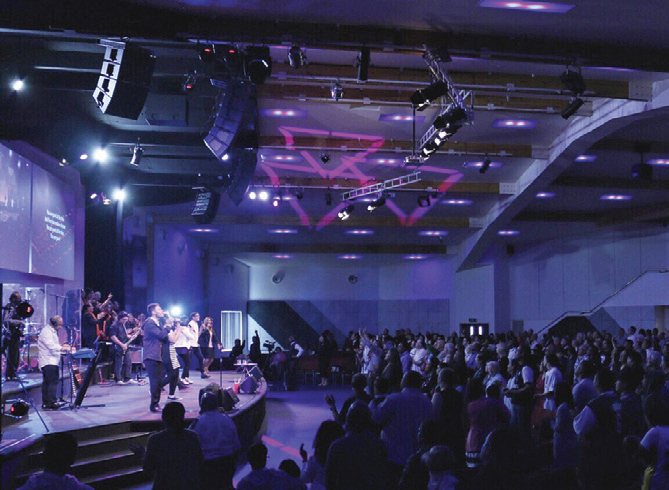
Even with monaural (mono) systems, “first choice” loudspeaker placements often create problems with sightlines and aesthetics, and are therefore ruled out by venue owners. Multiple loudspeakers must overlap somewhere, and there will be sound problems in these areas.
A properly designed system will often sound bad in the aisles – the very place where casual onlookers will stand to evaluate it. We all have good sound at home, but the rules change as the listening space grows.
Intuition that is not filtered through the proper large-room principles leads to errors. Sound system designers are often forced to compromise away the performance of the system to make it fit aesthetic concerns, budget limitations, and fashion trends within the industry.
The Operator
I’ve intentionally saved this one until last. The most overlooked link in the chain is the end-user of the system. This includes the mixer operator and any supporting staff, such as those who run the monitors and place microphones.
A stage monitor system that is too loud will dump excessive energy (usually low/mid-frequency) into the audience area. This excess energy will upset the spectral balance of the house sound system, tempting the front-of-house operator to compensate by over-equalizing (usually in the form of high-frequency boost). This results in a reduction in gain-before-feedback and an unnatural sounding system. Microphone placement is equally critical, as is an understanding of the shortcomings of various miking techniques.

If a lapel mic could sound like a handheld, then no one would use handhelds. The overhead drum mic that captures the cymbals also captures the stage monitors and “spill” from other instruments, as does the vocal mic used at arm’s length. And that “mellow” bass guitar sound that the musician likes in the practice hall turns to “mush” in a large space, where increased definition provided by the use of a pick and brighter strings may be required.
These factors and many more “eat away” at the sound quality of the system as a whole. A good mixer operator will evaluate and optimize the sound of the instruments individually before allowing the band to perform as an ensemble. There’s no room for democracy here – effective mixer operators learn to say “no” and “be quiet.”
A question that I recommend for an interview of prospective mix personnel would be “What will you do if something starts to squeal?” If the answer is anything other than “Turn the offending channel down slightly until I figure out what the problem is” move on to your next applicant. Filters implemented in desperation do nothing to preserve sound quality.
Modern mixing consoles pack a considerable “wow factor.” It’s fashionable to sit behind a large one and push buttons all of the time. But doing so doesn’t make one an engineer. Completing an accredited academic program or piloting a locomotive does. The decision as to which console to purchase is often made with no consideration as to whether anyone at the facility will be able to operate it. The result? Bad sound.
I’ve personally witnessed the performance of many good sound systems ruined by bad rooms and incompetent operators. I have also seen skilled operators “salvage” the sound reproduction in situations where the room and system were less than optimal.
The performance of a sound system is only as good as its weakest link. Unfortunately, all of the links that I’ve mentioned are of roughly equal importance, meaning that “two out of three” isn’t good enough. Good sound requires all three.
Experienced, well-trained audio people realize this and are there to help you find your weakest link. Pay for their advice and follow it.
